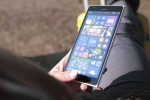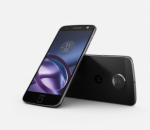We’ve had wristwatch cell phones for some time, and they haven’t exactly become a must-have item for anyone. But this was largely because folks wanted to build cheap phones, and the cost of putting a good watch phone on your wrist or another part of your body has been prohibitive.
But step back and think for a moment. If you are like me, you probably have a laptop, a tablet and a smartphone, which is by my count two more things and a level of complexity you’d rather not deal with. If you move the watch to the wrist and integrate the phone capability, you drop one device, and as tablets and laptops continue to drift together, you’ll be down to one device you have to carry. Now, if you take a head-mounted high-resolution display and couple it with voice recognition and command, plus a virtual keyboard, you’d be able to give up the tablet and laptop.
(Related: Borg technology, even in books)
Let’s talk about that and why it will take a decade or more to get this done.
Smartphones, tablets and laptops: The problem
The problem with all three classes of device is that smartphones are too small to type on fast or display as much information as you would like, but they fit in your pocket (at least most do). Tablets are larger but still not large enough for most to live off of, and they are thought to be too large for phone use (though this is clearly changing). Even notebooks don’t have as much video real estate as you’d probably like, but they do have a workable, decent-sized keyboard and plenty of performance. But they sacrifice portability and battery life to get there.
A smartphone is best for communicating. A tablet is best for consuming information (text, videos, etc.) because it is still portable. And a laptop is best for creation. The differences are increasingly coming down to two things: Screen size, and how you enter the data (real or virtual keyboard).
Fixing the problem
As head-mounted displays get more and more resolution, and as we figure out how better to blend the real and virtual worlds (by using things like an integrated camera), their utility will grow. And with the right resolution and optics, with a head-mounted display we can create experiences that rival that of a 40-inch TV.
Voice-to-text capability has been improving sharply, and voice command is already very advanced, which allows you to forgo a keyboard. Further, technologies that allow you to project a keyboard on any service have advanced to the point that folks who want to type without a real keyboard have that option.
The result is that we are very close to having a head-mounted display you could wear all the time, and using voice and a virtual keyboard for different tasks means we no longer require a physical keyboard for data entry.
The eventual solution would constitute a high-resolution head-mounted display with a 4K camera and microphone coupled with a computing unit you’d keep in your pocket or on your belt, or in your purse wirelessly connected to the head-mounted display.
You’d see the world through the display, which would automatically adjust for low light to help you see, and you would be able to bring up information in a heads-up format on your health, location, and businesses around you. It’d also do full PC-level work using a combination of the display and your voice.
You’d interact by talking to the device or using any flat surface as your digital keyboard, and you’d likely be unable to live without the device, which would form an interface between you and both the physical and material worlds.
The Borg future
The Borg were human/machine hybrids created for the “Star Trek” universe and showcased mostly in the series “Star Trek: The Next Generation.” With the Borg, it was hard to tell where the machine left off and the human began. The result of having and wearing all of this technology that constantly keeps you connected and filters all that you do and see is that it will be increasingly hard to tell what is real and what is virtual, and where the human leaves off and the machine begins.
What will take time isn’t the technology, most of which is cooked. It is our acceptance of living even more connected than we do today, and with looking like rejects from “The Terminator” for most of our lives.
Rob Enderle is a principal analyst at the Enderle Group.






